-
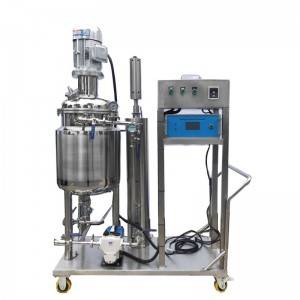
20Khz ultrasonic dispersing homoegnizer machine
Ultrasonic homogenizing is a mechanical process to reduce small particles in a liquid so that they become uniformly small and evenly distributed. When ultrasonic processors are used as homogenizers, the objective is to reduce small particles in a liquid to improve uniformity and stability. These particles (disperse phase) can be either solids or liquids. A reduction in the mean diameter of the particles increases the number of individual particles. This leads to a reduction of the average pa... -

20Khz ultrasonic nano materials dispersion homogenizer
Ultrasonic homogenizing is a mechanical process to reduce small particles in a liquid so that they become uniformly small and evenly distributed. When ultrasonic processors are used as homogenizers, the objective is to reduce small particles in a liquid to improve uniformity and stability. These particles (disperse phase) can be either solids or liquids. A reduction in the mean diameter of the particles increases the number of individual particles. This leads to a reduction of the average pa... -
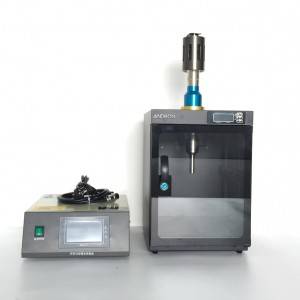
Laboratory ultrasonic equipment with soundproof box
The mixing of powders into liquids is a common step in the formulation of various products, such as paint, ink, shampoo, beverages, or polishing media. The individual particles are held together by attraction forces of various physical and chemical nature, including van der Waals forces and liquid surface tension. This effect is stronger for higher viscosity liquids, such as polymers or resins. The attraction forces must be overcome on order to deagglomerate and disperse the particles into li... -
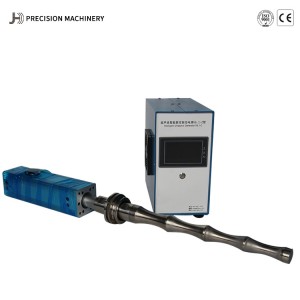
Ultrasonic sonochemistry machine for liquid treatment
ltrasonic sonochemistry is the application of ultrasound to chemical reactions and processes. The mechanism causing sonochemical effects in liquids is the phenomenon of acoustic cavitation. Acoustic cavitation can be used for various applications such as dispersion, extraction, emulsification, and homogenization. In terms of throughput, we have different equipment to meet the throughput of various specifications: from 100ml to hundreds of tons of industrial production lines per batch. SPECIFI... -

Ultrasonic dispersion mixer
Mixed applications mainly include dispersion, homogenization, emulsification, etc. Ultrasound can effectively mix different materials with high speed and powerful cavitation. Ultrasonic mixers used for mixing applications are mainly characterized by the incorporation of solids to prepare a uniform dispersion, the depolymerization of particles to reduce the size, etc. SPECIFICATIONS: MODEL JH-BL5 JH-BL5L JH-BL10 JH-BL10L JH-BL20 JH-BL20L Frequency 20Khz 20Khz 20Khz Powe... -
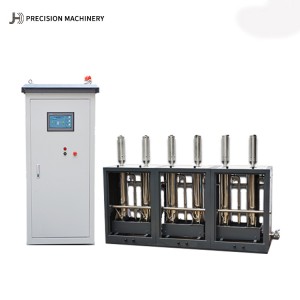
Industrial Flow Ultrasonic Extraction Equipment
Ultrasonic extraction is based on the principle of acoustic cavitation. Immersing the ultrasonic probe in a herbaceous plant slurry or a mixed solution of plant roots, stems, leaves, flowers and green solvents can cause strong cavitation and shear forces. Destroy plant cells and release the substances in them. JH provide industrial ultrasonic extraction lines of different scales and different forms. The following are the parameters of small and medium-sized equipment. If you need a larger sca... -
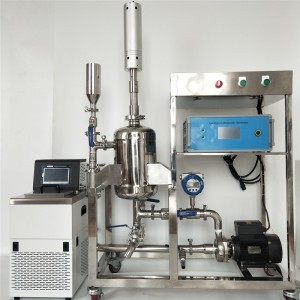
Ultrasonic liquid mixing equipment
The mixing of powders into liquids is a common step in the formulation of various products, such as paint, ink, shampoo, beverages, or polishing media. The individual particles are held together by attraction forces of various physical and chemical nature, including van der Waals forces and liquid surface tension. This effect is stronger for higher viscosity liquids, such as polymers or resins. The attraction forces must be overcome on order to deagglomerate and disperse the particles into li... -

3000W ultrasonic dispersion equipment
This system is for small scale thin viscosity liquids processing, such as CBD oil, carbon black, carbon nanotubes, graphene, coatings, new energy materials, alumina, nanoemulsions processing.
-
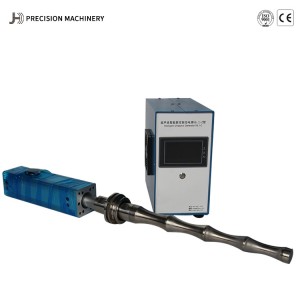
Ultrasonic dispersion sonicator homogenizer
Ultrasonic homogenizing is a mechanical process to reduce small particles in a liquid so that they become uniformly small and evenly distributed. Sonicators work by generating intense sonic pressure waves in a liquid media. The pressure waves cause streaming in the liquid and, under the right conditions, rapid formation of micro-bubbles which grow and coalesce until they reach their resonant size, vibrate violently, and eventually collapse. This phenomenon is called cavitation. The implosion... -
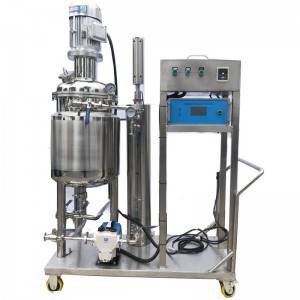
Ultrasonic liquid processing equipment
The applications of ultrasonic liquid processing equipment include mixing, dispersing, particle size reduction, extraction and chemical reactions. We supply to various industry segments, such as nano-materials, paints & pigments, food & beverage, cosmetics, chemicals and fuels. -
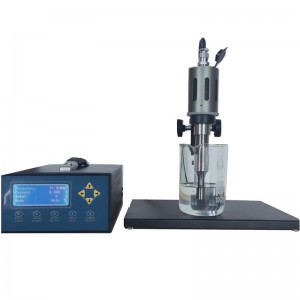
Ultrasonic Laboratory Homogenizer Sonicator
Sonication is the act of applying sound energy to agitate particles in a sample, for various purposes. Ultrasonic homogenizer sonicator can disrupt tissues and cells through cavitation and ultrasonic waves. Basically, an ultrasonic homogenizer has a tip which very rapidly vibrates, causing bubbles in the surrounding solution to rapidly form and collapse. This creates shear and shock waves which tear apart cells and particles. Ultrasonic Homogenizer sonicator are recommended for homogenization... -
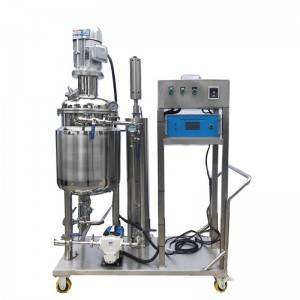
Ultrasonic sonochemistry device for liquid processing
Ultrasonic sonochemistry is the application of ultrasound to chemical reactions and processes. The mechanism causing sonochemical effects in liquids is the phenomenon of acoustic cavitation. Acoustic cavitation can be used for various applications such as dispersion, extraction, emulsification, and homogenization. In terms of throughput, we have different equipment to meet the throughput of various specifications: from 100ml to hundreds of tons of industrial production lines per batch. SPECIF...
